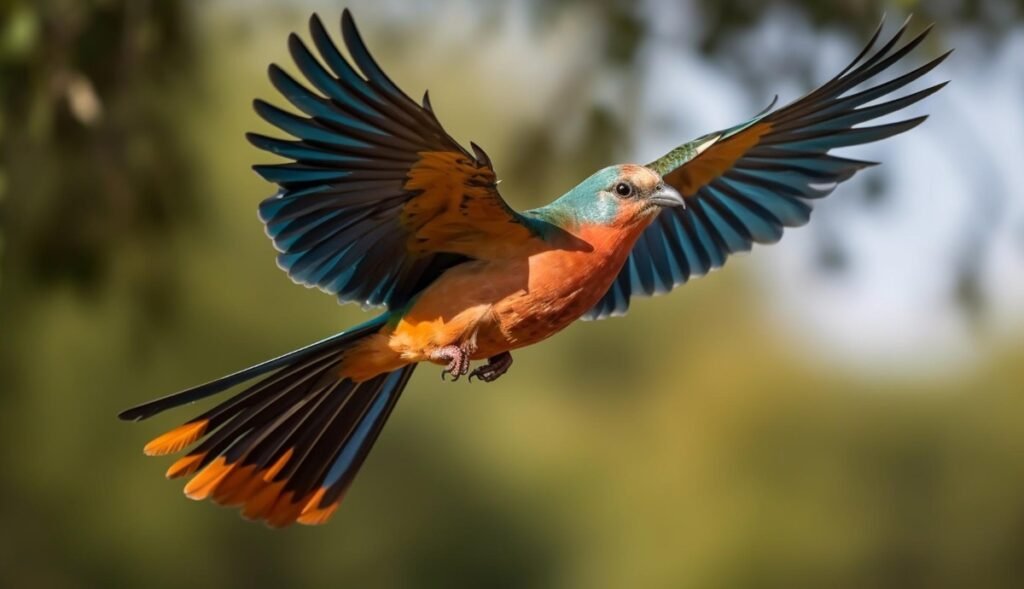Understanding the intricate world of animal behavior has always fascinated humans. Among the many captivating aspects of the animal kingdom, the concept of love in birds stands out. While we may anthropomorphize their actions, observing birds forming strong pair bonds and engaging in elaborate courtship rituals sparks curiosity about the underlying reasons behind these behaviors.
Why Do Birds Fall in Love?
The question “Why do birds fall in love?” delves into the complex interplay of biological, evolutionary, and social factors that drive mate selection and pair bonding in avian species.
Biological and Evolutionary Drivers
From an evolutionary perspective, love in birds is fundamentally about survival and the continuation of their species. Choosing the right mate ensures the production of healthy offspring, increasing the chances of passing on their genes to future generations.
Social and Behavioral Factors
Beyond the biological imperative, social and behavioral factors also play a crucial role in avian love. Birds often form strong pair bonds that last for years, collaborating in nest building, raising young, and defending their territory. These social bonds contribute to the overall well-being and success of the pair.
Why Do Birds Fall in Love?
Birds, with their vibrant plumage, melodious songs, and intricate courtship rituals, have long captivated humans with their seemingly passionate relationships. But what drives these avian affections? Is it simply instinct, a biological imperative to reproduce, or is there something more profound at play?
The answer, as with many things in nature, is complex and multifaceted. While the primary driver behind bird mating is indeed the urge to perpetuate their species, the ways in which they express and experience this urge reveal a fascinating tapestry of emotions, behaviors, and social complexities.
The Biology of Bird Love
At its core, bird love is rooted in biology. Hormones, particularly testosterone and estrogen, surge during breeding season, triggering a cascade of behaviors aimed at attracting a mate and ensuring successful reproduction. These hormones influence everything from plumage brightness and song complexity to territorial defense and courtship displays. (See Also: What Birds Steal Nests)
Birds, like many animals, are driven by a powerful instinct to find a suitable partner and produce offspring. This instinct is deeply ingrained in their DNA and is essential for the survival of their species. However, the way birds go about finding and choosing a mate is far from random.
The Art of Attraction: Courtship Rituals
Bird courtship rituals are a testament to the intricate ways in which nature orchestrates attraction. These elaborate displays, unique to each species, involve a dazzling array of behaviors, from intricate dances and synchronized movements to vocalizations that range from melodious songs to booming calls.
- Visual Displays: Many birds, like peacocks with their iridescent tails, rely heavily on visual cues to attract mates. Bright colors, elaborate patterns, and intricate dances all serve to showcase their fitness and desirability.
- Vocalizations: Songbirds are renowned for their complex and beautiful melodies, which are often used to attract mates and defend territories. The quality, length, and complexity of a bird’s song can be a strong indicator of its health and genetic quality.
- Gifts: Some bird species, like bowerbirds, go to great lengths to impress potential mates with elaborate nests adorned with colorful objects and trinkets. These gifts serve as a symbol of the male’s resourcefulness and ability to provide.
These rituals are not merely superficial displays; they serve a crucial evolutionary purpose. By choosing mates based on these elaborate performances, birds are selecting for individuals with desirable traits, ensuring the health and survival of their offspring.
Beyond Instinct: The Role of Experience and Learning
While instinct plays a significant role in bird mating behavior, experience and learning also contribute to the complexities of avian relationships. Birds often form strong pair bonds that last for multiple breeding seasons, suggesting a level of emotional attachment and familiarity.
Studies have shown that birds can learn to recognize and prefer the songs and calls of their mates, even after being separated for extended periods. This suggests a level of individual recognition and bonding that goes beyond simple instinct.
The Mystery of Avian Emotions
While we can observe and analyze bird behavior, the true nature of their emotions remains a subject of ongoing debate. Can birds truly “fall in love” in the same way humans do? The answer is likely complex and nuanced. (See Also: What Does Seeing Black Birds Mean)
Some researchers believe that birds experience emotions similar to love, such as attachment, affection, and even jealousy. This is supported by observations of birds displaying behaviors that appear to be driven by emotional motivations, such as defending their mates from rivals or grieving the loss of a partner.
However, it is important to remember that we are interpreting animal behavior through a human lens. While we may see parallels between bird behavior and our own experiences, it is impossible to know for sure what is going on in the minds of these fascinating creatures.
Recap: The Intricate World of Bird Love
The reasons why birds fall in love are a blend of biological imperatives, intricate courtship rituals, and perhaps even a touch of emotion. Driven by hormones and instinct, birds engage in elaborate displays to attract mates and ensure the survival of their species.
While we may never fully understand the complexities of avian emotions, their captivating behaviors provide a glimpse into the fascinating world of animal relationships and the powerful forces that drive them.
Why Do Birds Fall in Love? FAQs
Why do birds mate for life?
While many bird species are known for their lifelong pair bonds, it’s not a universal truth. Some birds mate for a single breeding season, and others may form new partnerships each year. The reasons for monogamy vary, but often include the benefits of shared parenting responsibilities, increased territory defense, and greater success in raising offspring.
How do birds choose their mates?
Birds use a variety of cues to select mates, including visual displays, songs, dances, and even scent. Factors like plumage brightness, song complexity, and physical fitness can all play a role in attracting potential partners. (See Also: When Do Baby Birds Open Their Eyes)
What role does instinct play in bird courtship?
Instinct is a powerful driver in bird courtship behaviors. Many species have innate patterns of song, dance, and nest building that are passed down through generations. These instinctive behaviors help ensure successful mating and reproduction.
Do birds experience emotions like love?
While we can’t definitively say if birds feel “love” in the same way humans do, their strong pair bonds and dedicated parental care suggest complex emotional attachments. They exhibit behaviors like affection, jealousy, and grief, which point to a capacity for deep emotional connections.
Is there a difference between love and attraction in birds?
It’s likely that birds experience both attraction and love. Initial attraction may be driven by physical cues and the desire to reproduce. Over time, this attraction can deepen into a stronger bond based on shared experiences, cooperation, and parental care, which could be considered a form of love.


